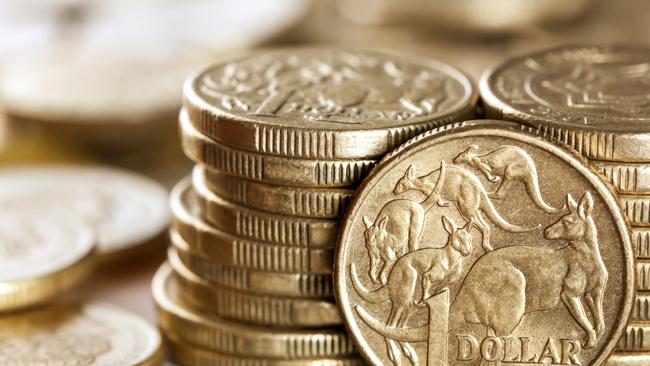Australian wages grow at weakest rate in over 18 years
The Wage Price Index has shown its weakest growth in at least 18 years, raising the chances of another rate cut.

Australian wages are growing at the slowest rate for at least 18 years, official figures have revealed.
The Australian Bureau of Statistics reported seasonally adjusted wage growth of just 0.4 per cent in the March quarter, leaving the Wage Price Index at 2.1 per cent on an annual basis.
It represents the weakest rate of annual growth since the data series first began in September 1998.
The numbers fell short of market forecasts for rises of 0.5 per cent and 2.2 per cent and comes as the Reserve Bank keeps a close eye on inflation numbers amid expectations it could further trim rates this year.
The wage price numbers will only heighten expectations for another move in August, with the Australian dollar slipping on the release this morning.
It follows the release of minutes from the RBA’s May board meeting yesterday, which suggested the central bank thought the decline in wage growth may have hit its low.
“Information from the Bank’s business liaison suggested that firms generally had been unwilling to make offers of wage growth below 2 per cent,” the RBA said.
“But if inflation was to be persistently lower than previously forecast, it was possible that, in time, this could be reflected in lower wage growth.”
Private sector wages continued to lag the growth seen in the public sector, with private numbers up 0.4 per cent in the March quarter, as opposed to 0.5 per cent in the public sector.
For the 12 months to March 31, wage growth in the private sector was a modest 1.9 per cent, while public sector wages rose a more robust 2.5 per cent.
The 1.9 per cent figure in the private sector contrasts with the aforementioned RBA view of a 2 per cent floor.
CommSec chief economist Craig James said the numbers ushered in the ‘new normal’.
“For a long time, wage growth near 3 per cent was regarded as ‘normal’,” he said.
“That is, before the global financial crisis and the new era of disruption. Now inflation is well below 2 per cent, between 1.0-1.5 per cent. And wages are growing at a near 2 per cent annual pace.
“Welcome to the new ‘normal’.”
Mr James said there was a silver lining to the figures as they will help businesses adjust to a lower growth environment.
”Wage growth near 2 per cent is a win-win situation,” he said.
“Lower growth of wages has encouraged employers to take on more staff. And while low nominal growth of wages near 2 per cent is an adjustment for employers, wages are still growing at a faster pace than prices. So real wage gains are still boosting consumer purchasing power.”
The spread in wage growth across sectors spanned a 1.3 per cent to 2.6 per cent range, with those involved in rental, hiring and real estate services facing the most muted rise. In contrast, a 2.6 per cent annual gain was seen for financial and insurance services, education and training, and healthcare and social assistance.
The primary laggards over the past couple of years, however, have been those in the construction, scientific and administrative sectors, with sub 2 per cent annual growth seen for five straight quarters.
At 1.15pm (AEST), the Australian dollar is trading at US72.88 cents, down from US73.01c just prior to the ABS release.


